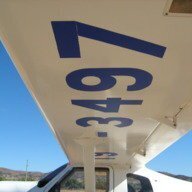-
Posts
3,477 -
Joined
-
Last visited
-
Days Won
19

Bruce Tuncks replied to Bruce Tuncks's topic in Aircraft Incidents and Accidents

Bruce Tuncks replied to Bruce Tuncks's topic in Aircraft Incidents and Accidents

Bruce Tuncks replied to Bruce Tuncks's topic in Aircraft Incidents and Accidents

Bruce Tuncks replied to Bruce Tuncks's topic in Aircraft Incidents and Accidents

Bruce Tuncks replied to Garfly's topic in AUS/NZ General Discussion

Bruce Tuncks replied to Garfly's topic in AUS/NZ General Discussion

Bruce Tuncks replied to Garfly's topic in AUS/NZ General Discussion

Bruce Tuncks replied to Bruce Tuncks's topic in Aircraft Incidents and Accidents

Bruce Tuncks replied to Bruce Tuncks's topic in Aircraft Incidents and Accidents

Bruce Tuncks replied to Bruce Tuncks's topic in Aircraft Incidents and Accidents

Bruce Tuncks replied to Garfly's topic in AUS/NZ General Discussion

Bruce Tuncks replied to Bruce Tuncks's topic in Aircraft Incidents and Accidents

Bruce Tuncks replied to Garfly's topic in AUS/NZ General Discussion

Bruce Tuncks replied to Garfly's topic in AUS/NZ General Discussion

Bruce Tuncks replied to Garfly's topic in AUS/NZ General Discussion

Bruce Tuncks replied to Garfly's topic in AUS/NZ General Discussion

Bruce Tuncks replied to Garfly's topic in AUS/NZ General Discussion

Bruce Tuncks replied to Garfly's topic in AUS/NZ General Discussion

